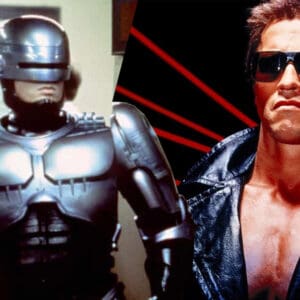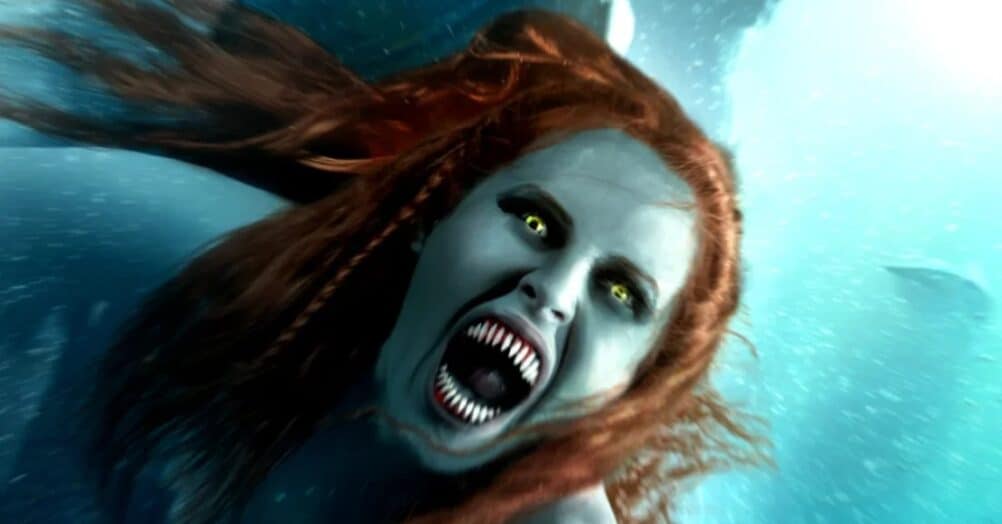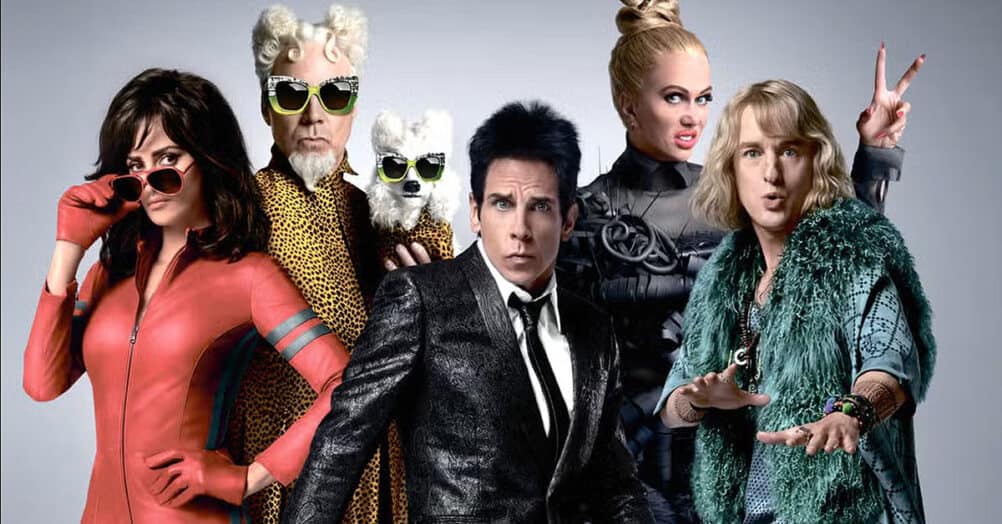

DEATH COMES TO METROPOLIS
Lex Luthor’s Action Comics #893 (DC, $3.99)
By Adam Prosser
This comic is notable for two big reasons. The first is that it represents the first appearance of Death in a main-line DC comic. No, I don’t mean it’s the first time anyone’s died in a DC comic, I mean it’s the first appearance of a certain Hot-Topic-ready goth chick who was a big star in comics two decades ago.
For you young whippersnappers who may not know, this particular version of Death was created by Neil Gaiman in the deservedly acclaimed Vertigo comic Sandman in the late 80s, when creating a goth character was actually a relatively bold and original choice. She hasn’t made an appearance since that series ended, but, as DC announced a while back to some controversy, some of the characters associated with Vertigo are going to be appearing in the main DC books. Which is only fair, as many of them originated there in the first place (even Sandman featured some appearances by superheroes like Martian Manhunter and Mr. Miracle.) And the Sandman Death’s lenient nature would certainly go a long way towards explaining the constant resurrections in a superhero universe…
The second big feature of this comic is the Jimmy Olsen backup story by Nick Spencer and RB Silva, which, I believe, is the first time the character has been a headliner since his book was cancelled during Jack Kirby’s tenure. This ongoing comic promises to recapture some of the craziness and fun of Jimmy’s Silver Age adventures.
Action Comics has, of late, been taking a lot of flack as “The Superman book without Superman”, but the creative team is working overtime to produce something offbeat and fun, and I’d say they’ve succeeded. Check it out, even if you’re a diehard fan of the Big Blue Boy Scout.




 GHOST IN THE MACHINE: “TANK” PACKS A LOT OF FIREPOWER
GHOST IN THE MACHINE: “TANK” PACKS A LOT OF FIREPOWER
G.I. Combat featuring Haunted Tank #1
By Sean Fahey
Haunted Tank. Say it again. Haunted. Tank. I think there’s a good argument that no two words in the English language have been so brilliantly paired. The ghost of infamous Confederate cavalry General Jeb Stuart “haunts” a U.S. Stuart tank, and it’s commander, Stuart’s namesake, during the Second World War. It’s a concept that screams “comic book,” and if you can’t appreciate that, well…you just don’t love comics. It’s as simple as that. The fourth in a series of one-shots featuring DC’s classic World War II characters, this book follows the Haunted Tank and its crew as they play cat-and-mouse with the fear inducing German Tiger tanks in Belgium, right when the Germans began really digging their heels in. Nothing revolutionary, no one’s reinventing the wheel here. This is just a well written, well illustrated, exciting war story in the best tradition of the classic “Haunted Tank” stories, a welcome change of pace from last week’s lackluster “Losers” one-shot. So just suspend your logic, strap your fun helmet on, and enjoy this action-packed war story.




 EXPLOITING THE FRANCHISE: “MACHETE” IS MOSTLY HACKWORK
EXPLOITING THE FRANCHISE: “MACHETE” IS MOSTLY HACKWORK
Machete #0 (IDW, $3.99)
by Graig Kent
Somewhere in-between the outrageous b-movie appeal of the “grindhouse” aesthetic and the maligned socially conscious action flick lies Machete, Robert Rodriguez and Ethan Maniquis’ “Mexploitation” answer to Shaft. Chock-a-block full of gratuitous T&A, gratuitous violence, and gratuitous use of Steven Seagal, the film was easy to enjoy, but it was also a bit of a bloated mess, trying too hard to have a message and losing its titular character amidst a veritable sea of better actors (with tons more lines). I guess that’s where this “origin” issue and subsequent mini-series come in. Aaron Kaufman and Robert Rodriguez introduce Officer Daniel Lopez, a “bad-ass cop” set to become, at any moment, “Machete”, the legend.
But therein lies the challenge. As fun as the film and the Grindhouse experience that spawned it can be, they’re unlikely going to be cult films because that’s exactly what they were designed to be, and you cannot force that kind of enthusiasm out of an audience. It has to happen naturally, usually over time. But, this book feels exactly that, forced, really trying to jam home the idea of Machete as a bad mothershutyourmouth.
Gone from the film is much of the humor, a lot of the “T”, most of the “A” and the violence is, well, mostly intact but not all that clever. The art by Stuart Sayger is reminiscent of 90’s Batman artist Norm Breyfogle, heavy on the inks and scratchily stylised, and it’s eceptionally gritty, but it doesn’t carry any of atmosphere of the film. Overall, as good-but-not-great as the movie was, Machete-the-comic book capitalizes on little of what actually made it good.




THIS FLAPPER IS A REAL VAMP!
American Vampire Volume One (Vertigo, $24.99)
By Jeb D.
Vampires aren’t the problem: like the Mob, or doctors, any set of stock characters and tropes can get tired and run into the ground when they get overexposed… or looked at from a fresh perspective, and presented with revived interest. That’s what American Vampire seeks to do, and if it’s not as wholly successful as something like True Blood, it’s certainly among the better comic book treatments of nosferatu in recent years.
Pearl is a would-be actress in 1920’s Hollywood who finds herself ensnared in a movie star’s glamorous lifestyle, only to find that it leads to a darker place than she’d imagined, and not to spoil things too much, she winds up attacked, killed, and turned into a vampire.
But no ordinary vampire. Thanks to a shabby-looking stranger who is (naturally) more than he appears to be, Pearl discovers that she’s part of a cycle of vampire evolution that will enhance her abilities and diminish her weaknesses relative to the old-World vamps that preyed upon her. And with those abilities, she goes seeking revenge.
This volume collects the first five issues of American Vampire, and writer Scott Snyder has fashioned an effective tale, less interesting for its specifics of vampire lore (much of which is obviously being held back for future issues), than for its more or less universal portrayal of Pearl as a woman, used and abused, who finds within herself the power to do something about that. The period setting does give the story a similar feel to Jonathan Ross and Tommy Lee Edwards’ Turf, but Snyder’s prose is leaner, his storytelling more efficient (though he’s prone to the odd anachronism, particularly in slang usage). Snyder’s vampires are your monstrous feral variety, with no fancy European manners or cultural ties, but that’s problematic: one of the things that keeps readers coming back to tales of the undead is the intriguing social structures that have accreted to the characters since Bram Stoker reinvented them. For an author to jettison much of that is an excellent first choice, but so far, I’m not sure that Snyder has replaced it with anything else quite as interesting: so far, Pearl’s about the only really compelling element in the story.
And that includes the shabby stranger, who turns out to be one Skinner Sweet, once a bloodthirsty outlaw of the Old West, now a highly independent vampire who takes an interest in Pearl, giving her (and the reader) tiny snippets of the information she’ll need to succeed in her new un-life. Sweet is also the principal character in the companion feature, where the story of his own turning is told by Stephen King himself. Given that we know more or less how it ends (Sweet, after all, is still running around in 1925), King manages to provide enough twists and turns to make his yarn an interesting one, and the characters whose story Sweet intersects are more affecting than most of Snyder’s supporting cast in the “main” story. I’m assuming that future issues will move Sweet along the path that eventually leads him to Pearl. If King’s not quite in the class of son Joe Hill as a comic book writer, his veteran’s knowledge of characterization and compelling plotting make up for the fact that he’s still getting used to the structure and pacing of sequential storytelling.
Rafael Albuquerque handles art chores on both stories, and does an equally good job with the period stylings as he does with the bloody, fluid action, and the monstrous physical distortions his vampires undergo (one neat touch: these “evolved” vampires can be seen in a mirror, but in a distorted “fun-house” reflection). Some of the paneling is a little awkward, and here and there both stories feel a bit choppy, as though details had been trimmed for considerations of space, but that’s likely as much on the writers and editors as Albuquerque.
Ultimately, it’s a promising beginning for an ongoing series, but it does feel a bit open-ended to give a full endorsement of the collected edition, since by the end of the book, we feel as though we’ve barely begun. The hardback includes an introduction from King (always readable on the subject of the creative process), and the usual “special features” (character sketches, rough page layouts, etc.). To me, it seems pricey at its list of $24.99 for five issues, so my ranking is based on the assumption that you’ll get it someplace like Amazon where they’ve got it listed for about $16.




NEMESIS: DUDE’LL KILL YA
Nemesis #3 (Icon, $2.99)
By Jeb D.
Mark Millar’s original pitch for this series was “What if Batman was a Cunt?”* Which sort of makes you wonder if Millar’s read a Batman comic anytime in the past twenty years: whatever merits The Killing Joke and Dark Knight Returns possessed a quarter-century ago, they certainly gave plenty of writers the idea that there were no limits to just how antisocial you could make the Caped Crusader. So when Millar suggested that Nemesis would take Batman’s most fundamental precepts and turn them on their head, a reader could be excused for wondering just what those precepts were: the modern spectrum of Bat-behavior runs the gamut from decency and heroism to sadistic thuggery and all points between. DC even gave Brian Azzarello his own alternate timeline to play in where he can drop the last Bat-taboo and have the guy packing heat. As a consequence, Nemesis isn’t particularly some kind of darker (or, given the costume, lighter) version of Batman–he’s just a supervillain. Sure, he’s got a bad attitude and an unending supply of toys, but so does The Joker (writers rarely worry overmuch about the vast resources that supervillains regularly call upon). So, while Millar continues to talk a good game about the outrageousness of the series’ premise, it’s just a bloody story of a bad guy out for revenge.
This issue focuses primarily on Nemesis’ arrival at the prison which, let’s face it, we know will never hold him. And, sure enough, a force of 97 cops in riot gear quickly prove nothing more than cannon fodder for Nemesis’ fighting abilities. I won’t spoil the clever, ingenious way that he effects his escape… because I can’t– it just happens. He beats up a lot of armed and armored guys, turns the other prisoners loose (in a plan that testifies again to the lack of any limitation on his resources), and resumes making life hell for Blake Morrow and his family. There’s an appalling deviousness to his scheme, but as with his escape, Millar can’t be bothered explaining how he pulls it off: it’s enough that he’s a supervillain. This is actually the area I’d hoped Millar might have something interesting to say with this series, showing us a bad guy who takes the intelligence, attention to detail, and tenacity of Batman and turns them against society, but so far Nemesis might as well be using magic. And while it’s not impossible that he’s got a ton of revelations coming as the series reaches its climax, that’s really no better: if he waits to the end to eventually reveal some secret as to how an army of SWAT guys get taken down like a Girl Scout troop, it’ll be way too late to be of much interest.
I don’t mean to dismiss the contributions of Steve McNiven: he’s got all the blood and gore that Juan Jose Ryp brings to his collaborations with Warren Ellis with twice the kinetic action and brisk paneling. McNiven’s so good that every now and again he actually pulls you into the comic. But then, wouldn’t you know it, the darn story starts up again, and your interest drifts away like dust in the wind. And the fact that this comic reminded me of line from a song by Kansas says it all: I fucking hate Kansas.
*(Folks at DC did politely ask him to change the tag line. He suggested “What if Batman was a Dick?”, but that was deemed too spoilery).


THIS WEEK’S TALKING POINTS:
ARE you bothered by Superman’s absence from Action Comics? He’s still in, like, three other books…
DC recently shuttered all of their other imprints aside from Vertigo, which as mentioned above is also beginning to cross over as well. Does this help keep things organized, or do you think DC is limiting itself?




















Follow the JOBLO MOVIE NETWORK
Follow us on YOUTUBE
Follow ARROW IN THE HEAD
Follow AITH on YOUTUBE